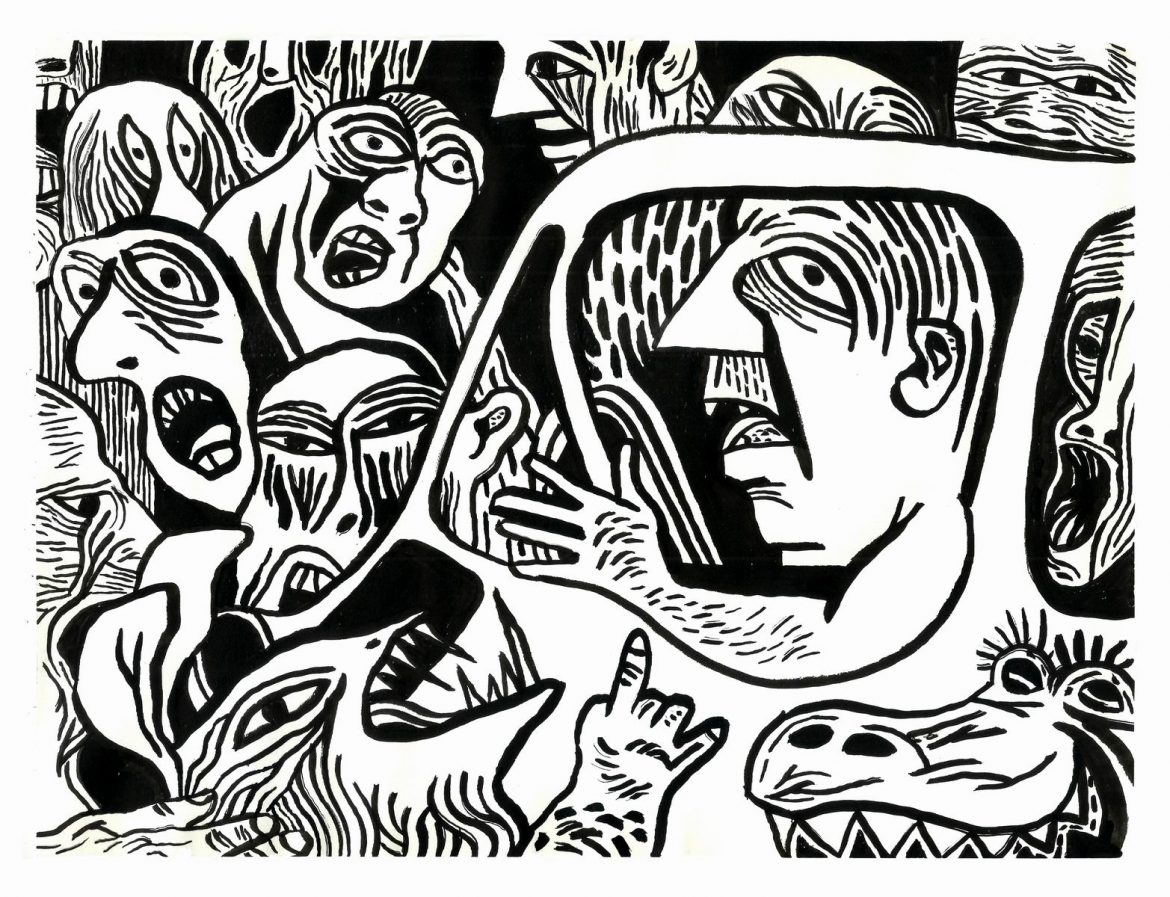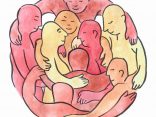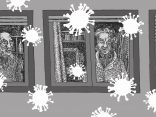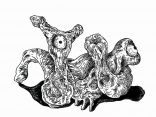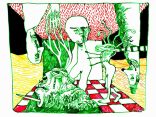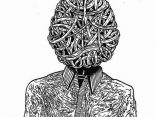Autore
Indice
- Intro
- Guy de La Brosse’s De la nature, vertu et utilités des plantes
- Cyrano de Bergerac’s Empires du Soleil et de la Lune
- Conclusions: A Botanical Protovitalism
↓ download pdf
S&F_n. 25_2021
Abstract
Before Vitalism: Libertine Botany and the non-Obscure Life of Plants
In this article, I investigate how much the understanding of plants in French Libertine culture somehow anticipated the vitalistic interpretation of nature as entirely endowed with sensation, perception, and cognition, something one may call protovitalism. Situated between the Renaissance naturalism of Telesio, Cardano, and Campanella (and also Cesalpino) and Glisson’s hylozoism, Libertine botany conceived of plants as key figures to challenge the restrictions on living bodies of the more traditional order of nature. Exploring the cases of Guy de La Brosse and Savinien Cyrano de Bergerac’s work, two different segments of Libertine culture, I uncover two meaningful interpretations of plant life as comprehensive and non-obscure, therefore subverting both the Aristotelian and the mechanical understanding of nature, suggesting plants as a crucial subject to build a more exhaustive and clearer knowledge of life on.
* Research for this article has been carried out with the support by a grant of the Romanian National Authority for Scientific Research and Innovation (CNCS-UEFISCDI), project number PN-III-P1-1.1-PD-2016-1496, and by a Marie Sklodovska Curie Fellowship, n. 890770, “VegSciLif.” I would like to thank the organizers and participants of the conference “Neo-Vitalismo e Antimeccanicismo” that took place at the University of Modena and Reggio Emilia on 9-10 October 2019, and professor Berenice Cavarra, as well as the editors of this special issue.
- Intro
Before the intervention of Romantic vitalism, seventeenth-century scholars had already given plants a more central role in the understanding of life[1]. Indeed, while plants disquieted the understanding of life in the early modern period, which was still ordered on the Aristotelian scale of beings, early modern thinkers explored vegetation with a new attention, sometimes exalting plants as a crucial subject to expand the concept of living nature. The best example of this new understanding of plants is in Francis Glisson’s (1597-1677) hylozoism[2], a third mode between Aristotelian hylomorphism and Cartesian mechanism. While these latter strands agreed in reducing plant life to the vegetative functions (regulated either by a vegetative soul or a vegetative power)[3], Glisson’s third way suggested the idea of a natural perception embedded in all nature, plants included. In the second half of the seventeenth century, Glisson’s hylozoism revived the Renaissance naturalism of Telesio, Cardano and Campanella, suggesting that sensation, imagination, and cognition pertained to vegetal bodies too. In this article I aim to shed light on a different strand that departed from Renaissance naturalism as well and recognized plants with an astonishing vigor and liveliness[4]. This especially surfaces in Libertine botany, whose interpretation of plants as key figures in challenging the definition and boundaries of life and living nature develops an alternative understanding of both[5]. While probing more deeply into the works of the French Libertine érudits, in this article I deal with the work of Guy de La Brosse (1586-1641) and Savinien Cyrano de Bergerac (1619-1655) in particular[6], who suggested a clear and non-obscure life for plants which strongly opposes the pseudo-Aristotelian De plantis interpretation of the life of plants[7].
In exploring the Libertine approach to plants, I aim to discuss a strand of what may be called pre-modern vitalism, if one may stretch a term beyond its original context. More specifically, in yielding «a consistent concept of matter as possessing sensation, perception, and knowledge», characteristics these thinkers attributed to plants, this appears to be an anticipation (or a strand) of what Charles Wolfe calls «protovitalism»[8]. The main core of the article concerns some aspects of La Brosse’s scientific text, after which I move to Cyrano de Bergerac’s narrative, Les États et Empires de la Lune et du Soleil. Both cases present connections with Italian Renaissance thinkers, and especially Cardano and Campanella’s philosophy.
- Guy de La Brosse’s De la nature, vertu et utilités des plantes
In his botanical philosophy, De la nature, vertu, et utilités des plantes (1628), the French botanist, physician, and alchemist Guy de La Brosse provides a crucial study of green nature that sheds light on a strand of the pre-vitalistic interpretation of nature in seventeenth-century French culture. In combining several strands, such as the reception of Paracelsus and alchemy, neo-Platonism, and Campanella, to name a few cases, the text provides plants with life in a fuller sense[9]. As Dominique Brancher has shown, La Brosse’s text strongly challenges the Aristotelian ontology of nature, ultimately aiming at “demonstrating the essential unity of vegetable and animal life,”[10] and revealing a less-obscure interpretation of the life of plants.
The work of La Brosse is very interesting. He was physician to King Louis XIII. Yet, his associations and friendships made him a nonconformist, and radical physician. He was in connection with the Libertine circles of Paris[11], frequented the Dupuy’s circle and certainly befriended Théphile de Viau (1590-1626) and François Luillier (ca. 1604-1652), and likely Marin Mersenne (1588-1648) and Pierre Gassendi (1592-1655), among others[12]. His reputation preceded him as an atheist and a follower of Epicurean philosophy. Undoubtedly, his philosophical and medical projects fell outside the orthodoxy of Aristotelian and Galenic frameworks, while he propounded some original views. He was a botanist who used plants for medical aims. As founder of the Parisian Royal Jardin des plantes, he rivalled the Medical Faculty of the Sorbonne, whose doctors saw in La Brosse «a threat to their monopoly of medical teaching [and] a criticism of their whole approach to medical study of practice, their neglect of botany and their hostility of the chemists»[13]. In the Jardin des plantes, he promoted an alchemical study of plant—the third book of De la nature, vertu, et utilité des plantes is «a general treatise of chemistry [Chimie]»[14] in which the author proposes several chemical experiments with vegetation[15]. At the end of De la Nature is included a short treatise, published some time before 1628, entitled Advis défensif du Jardin Royal des plantes, in which the author explains the reasons of his appreciation for Paracelsians. Moreover, as Rio Howard has revealed, chymistry made up a large section of La Brosse’s library[16]. Indeed, the combination of chymistry, medicine and botany already surfaces on the title page, where La Brosse displays four portraits of Hippocrates, whose motto is “From effects to causes”, Dioscorides, whose motto is “From experience to knowledge”, Theophrastus, whose motto is “Medicine is useless without plants”, and Paracelsus, whose motto is “Each thing has its heaven and its stars” [see Fig.1].
Advocate of experimentation, and truth digger in place of authority, La Brosse substantially reversed the common interpretation of nature and plants widespread at his time. From the beginning of the text, La Brosse praises the superiority of plants over all other bodies: for example, he claims, in line with the Mosaic interpretation of the Creation, that the formation of plants anticipates the formation of stars, suggesting that the former surpass the latter in virtues.[17] The richness of plants over the rest of nature especially regards life, as “from the abundantly vivifying power they have, they infuse and maintain life […] in Animals.”[18] More than being just necessary to animals, plants display an excess of life which make them comparable to animals in what concerns living activities.
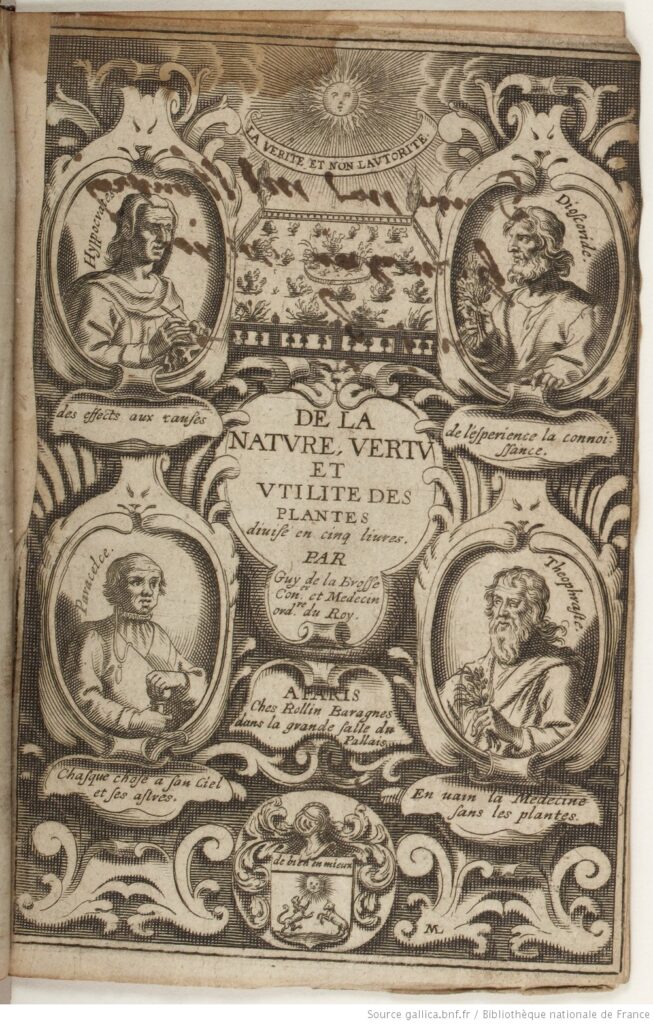
[Figure 1. G. de La Brosse, De la Nature, vertu, et utilité des plantes, Paris 1628, title page. Source www.gallica.bnf.fr / BnF ]
First, La Brosse defines plants under a new light. He rejects the limited definition of Aristotle, who restricted plants to vegetative activities, and following the Ancient philosophers Anaxagoras and Empedocles he portrays plants as having so-called superior faculties. Among contemporaries, La Brosse follows Tommaso Campanella’s (1568-1639) interpretation of nature in De sensu rerum et magia (1620). Accordingly, he claims that there is no difference in the life of animals or plants in respect of many activities, ranging from generation to movement and sensation; yet, as far as accretion is concerned, life «is more eminent in Plants rather than in Animals», as plants «grow until their death»[19]. In claiming life is clearer in plants, La Brosse strongly opposes pseudo-Aristotle’s De plantis. What is more, he then rejects the Aristotelain tripartion of souls and the attribution of the sole vegetative soul to plants. While he suggests plants are endowed with vegetative activities, La Brosse rejects the restriction in defining plants according to these activities or attributing to them the sole vegetative soul.
[W]hen we consider the soul of plants in general, we do not concentrate on the vegetative faculty, because this [does not] specify [plants], but [we consider] some other virtue that constitutes the Plant as a Plant […]: If the soul of the Plant only consists in vegetation, it would be difficult to find all our measures. Where would the differences […] between plants originate?[20]
Accordingly, while plants reveal many complexities and differences, reducing them to the sole vegetation fails to provide any explanation to their varieties and life. He then claims that «the vegetative faculty is not the soul of the Plant, but it is one of its virtues shared with animals and men»[21]. In contrast, La Brosse conceives the presence of «an Artisan spirit [esprit artiste] in every subject», this Artisan operating in «working and arranging matter according to its cognition and natural inclination to produce a sensible action»[22] that provides plants with shape, colors, odors, qualities, virtues and faculties. La Brosse’s description of the Artisan echoes the Paracelsian Archeus, which produces the varieties in plants.
In stressing the variety, diversity, and multiple activities of plants, La Brosse acknowledges a similarity with animals. Anything an animal does can be found in some plant. In this sense, the richness of green nature is limitless, as La Brosse compares it to the animal variety. Along this line, he compares the faculties of the soul of plants with those of the soul of animals. This in plants consists of (a) life, i.e., their existence, (b) vegetation, i.e., the attraction of food, digestion, transmutation, distribution, assimilation and augmentation, and expulsion, and (c) specification, namely all the specific characteristic of each plant[23]. Besides the strong animal-plant continuity, up to this chapter, La Brosse appears to restrict the life of plants to vegetation and the formation of specific characteristics, such as the virtues of each different plant.
From chapter 8 of the first book, La Brosse explores the presence of sensation, emotions, and sleeping and waking states in plants, therefore providing plants with so-called superior faculties. Rejecting the objections against the presence of sensation in plants, La Brosse follows Campanella’s De sensu rerum and Gerolamo Cardano’s (1501-1576) De subtilitate (1547), who acknowledged sensation in plants[24]. A main difference lies in the cosmological construction, as La Brosse denies any strong astral influence on plants, and replaces magic with experimentation. Yet, he claims that while plants have no organs of sensation, they have something equivalent that one could understand through experience[25]. For example, since plants attract food with roots, La Brosse claims that roots are the “instrument of taste,” as each plant reveals a very specific preference for different terrain. In this way, plants display a form of sensation, which one could prove through this preference. Moreover, the attraction of the right food «cannot be done without an order of cognition»[26], and La Brosse suggests that plants thus display a form of cognition.
What is interesting to note is that La Brosse does not connect the attraction to food to a form of desire, which would rank his position within Neoplatonic trends. Yet, a page later he discusses the case of the attraction to water of cucumbers. He writes: «the Cucumber loves water so much that if you put a pot a water close to its fruit, it stretches out to reach it, in a way that it grows to an extraordinary length»[27]. While it is not clear whether La Brosse performed this experiment himself, this was common knowledge at the time. The same observation can be found in Francis Bacon’s (1561-1626) Sylva Sylvarum (1626-1627)[28]. Indeed, in this text Bacon suggests to «set a pot of water about five or six inches distance from [a cucumber], it will in twenty-four hours shoot so much out as to touch the pot […]: [this experiment] discovereth perception in plants to move towards that which should help and comfort them, though it be at a distance»[29] to which he finally adds that «the cucumber [is] creeping to the pot of water»[30]. Incidentally, one should note that Bacon shared with many Italian Renaissance vitalists a belief in the radiative nature of bodies.
Besides the Baconian experimentation, La Brosse stresses the connection between sensation and cognition: the plant knows how to be close to water and moves towards it, and emotion: the plant likes water. Then, La Brosse presents several other emotions or affections in plants. In chapter 9, he discusses whether plants feel joy and sadness, as plants cheer for the rays of Sun through «the agitation of branches and leaves [that] makes a pleasant rustle [murmure] of elation»[31]. This emotion results in more abundant fructification,—«plants rejoice, & fructify planthappily [plantureusement]»[32] — or in joyful reproduction — «testifying to their desire for love»[33] plants imitate animals.
Two cases exemplify sadness and joy in plants. Both are exotic plants, whose story is taken from Cristóvão da Costa’s (c. 1525-c. 1594) Tractado delas drogas, y medicinas de las Indias orientales (1578). The first is the “sad tree”, which only flowers by night[34]. The second is the plant of life (herbe vive), which «reveals a similar sensation of displeasure when one touches it. The one we name Mimosa […] may be also named Joyful for the opposing effects to the sad tree: when the Sun sets, it becomes more languid and seems dead […] when the Sun rises, the plant rejoices, and reveals a full vigor by midday»[35]. Both cases reveal another aspect of La Brosse’s text, namely the claim that the presence of these faculties in plants is evident and can be observed. Although La Brosse cultivated a sensitive herb (or mimosa pudica) in the Jardin des plantes,[36] as is also reported in Mersenne’s 1638 correspondence[37], it is unclear whether he experienced the joy and sadness of this plant before the publication of his book. In both examples, La Brosse repeats the description of da Costa, but then adds the original interpretation of these cases as revealing emotions in plants, a feature absent in da Costa.
In all these cases, the Artisan endows plants with life and all the activities and faculties, revealing that the life of plants cannot be restricted to a few activities, and is similar to that of animals. While the phenomena of plant life are evident to the observer, the presence of this Artisan is more obscure and should be connected to the Archeus of Paracelsus, an author known by La Brosse, as I have shown earlier, and of Jan Baptista van Helmont (1579-1644), who La Brosse did not know directly. In van Helmont, the Archeus is a living spirit «operating as a living principle in all material objects»[38]. In this sense, attributing all the activities of life to an Artisan places La Brosse within the line of thought of the Paracelsian vitalists, just as claiming that sensation and emotion pertain to plants places La Brosse within the line of thought of the Renaissance naturalists. In his text, the French botanist endowed plants with natural perception, claiming that superior faculties pertain to plants as well, and ultimately providing an original interpretation of the life of plants as clearly similar to animals, in a world endowed with a spirit of life consistent with Renaissance naturalism.
- Cyrano de Bergerac’s Empires du Soleil et de la Lune
Cyrano de Bergerac published his work within the same Libertine context[39]. The États et Empires de la Lune was published in 1657, and the États et Empires du Soleil in 1662. While discussions of the sensation of plants are present in the literary work and reflections of several Libertine authors, such as François de La Mothe Le Vayer (1588-1672) among others[40], Cyrano de Bergerac stresses this point somewhat further in his proto-science fiction narratives. As Brancher has shown, in describing imaginary encounters with fantastic extraterrestrial plants, the latter unearths the experience of thinking in plants[41]. The main point of the work is that there are no borders differentiating living bodies, as life is similar to all beings, and no ontological differences surface; neither order nor scale of beings therefore exists[42].
Indeed, in L’Autre Monde, Les États et Empires de la Lune et du Soleil, through the intermediary of the daemon of Socrates the narrator acknowledged the identity between humans and plants[43], and met the idea that plants such as cabbages that have rationality[44]. The inversion of common sense is striking. Yet, common sense only describes how much we are unable to understand plants and other bodies, while the contrary is testified to in diverse sources. Moses, for example, knew that plants have cognition as he «spoke of the tree of knowledge, through which he aimed to teach that plants possess perfect philosophy though privately»[45]. Along this line, in Cyrano de Bergerac plants speak and therefore think. The main character, Dyrcona, experiences the ability of plants on his journey to the Sun when a fruit changes itself into a human body to teach him the truth of life and the universe[46]. The tree appears as a cosmos, where all parts can metamorphose into one another, in a vortex of life — the reference to Cartesian vortexes is evident. In this sense, no hierarchy of bodies develops, while a transformation from the simplest to the most complex, from plants to humans does not constitute a scale of bodies but merely reveals the connection of all bodies, as no difference surfaces between the nature of humans and plants, since the same life flows in animals, plants, and humans, and all bodies perform similar activities. As a result, in Cyrano «vegetatility […] is bursting with life, percipient, and libidinal»[47], as Meeker and Szabari have revealed.
This perspective is innovative. In Cyrano de Bergerac, both the arrangement of the atomic particles of matter, alchemy, and the animism of the Renaissance naturalists (such as Campanella) provide the framework to interpret nature[48]. The narration of these travels begins under the auspices of Cardan’s De subtilitate: the reading of chapter 19 of this text inspired Dyrcona in travelling to the Moon. Yet, Cyrano de Bergerac vegetalizes these diverse approaches, as he conceives plants (and seeds) as an appropriate example to visualize a self-replenishing world of beings provided with an internal source of life. This source is a fire contained, for example, in plants and shared with all living bodies, as the animating principle guarantees the transmutability of all matter. Accordingly, plants reveal the mutability that informs all nature.
If on the one hand, Cyrano provides plants with superior faculties, desires (especially erotic) and thinking, making plants equal to humans; on the other hand, he claims a similar material principle informs all cosmic life. In this sense, the garden acquires a cosmic significance, and reveals that matter possesses all the activities of life, namely intellection, cognition, desire, sensation, emotion, self-motion.
- Conclusions: A Botanical Protovitalism
While La Brosse provides plants with sensory possibilities that compete with the animal condition (and possibly surpass it), Cyrano de Bergerac suggests, in his utopian narrative, that plants completely surpass the restriction of the traditional philosophy and sciences of life. In both cases, their interpretations provide the universe with a flowing spirit of life that endows all bodies—and plants became the appropriate case-study to reveal that matter possesses sensation, perception, and thinking. These are two different examples of the same context: within the Libertine framework, La Brosse belongs to a more scientific (though original) strand, while Cyrano de Bergerac belongs with science fiction. If La Brosse is today less-known, Cyrano de Bergerac is a central figure in seventeenth-century French literature and philosophy[49]. Nevertheless, both authors provide a significant interpretation of plant life as comprehensive and less-obscure, as in both cases plants reveal superior faculties, an interpretation that stands in line with the Renaissance naturalism of Cardano and Campanella, and somehow anticipates Glisson’s hylozoism. Yet, while it is difficult to categorize the French Libertines, they certainly present a thought-provoking example of protovitalism spreading in early modern European culture, when the study of botany and the life of plants acquired momentum in the attempts to understand life.
[1] Cf. N. Meeker and A. Szabari, Radical Botany: Plants and Speculative Fiction, Fordham University Press, New York 2020, p. 5.
[2] See G. Giglioni, Campanella e Glisson. Motivi Ilozoistici nella medicina inglese della seconda metà del Seicento, «Bruniana&Campanelliana», 2, 1996, pp. 237-245; G. Giglioni, Francis Glisson’s notion of confoederatio naturae in the context of hylozoistic corpuscularianism, «Revue d’histoire des sciences», 55/2, 2002, pp. 239-262; Id., Sentient nature and the great paradox of early modern philosophy: How William Harvey and Francis Glisson reinterpreted Aristotelian ΦΥΣΙΣ, in A. Cardoso, M. Mendonça and M. Silvério Marques (a cura di), Natureza, causalidade e formas de corporeidade, Húmus, Lisbon 2016, pp. 9–28.
[3] See F. Baldassarri, A. Blank, eds., Vegetative Powers: The Roots of Life in Ancient, Medieval and Early Modern Natural Philosophy, Springer, Cham 2021.
[4] For a more precise investigation of Renaissance vitalism, see Marina Paola Banchetti-Robino in this fascicle. For a general study, see the recent work of Charles Wolfe, La philosophie de la biologie avant la biologie. Une histoire du vitalisme, Garnier, Paris 2019.
[5] For a general overview of Libertine culture, see A. Mothu, A. Del Prete, éds., Révolution scientifique et libertinage, Brepols, Turnhout 2000.
[6] See D. Brancher, Quand l’esprit vient aux plantes. Botanique sensible et subversion libertine (XVIe-XVIIe siècles), Droz, Genève 2015.
[7] Pseudo-Aristotle, De plantis, 815a10-14; see [Aristotele], Le piante, a cura di M.F. Ferrini, Bompiani, Milano 2012, p. 247. Cf. F. Baldassarri, Early Modern Philosophy of Plants and the Unwelcome Guest: Pseudo-Aristotle’s De plantis, in G. Giglioni, M.F. Ferrini (a cura di) Trattati greci di botanica in Oriente e Occident, EUM, Macerata 2020, pp. 237-264.
[8] Ch. Wolfe, Vitalism in Early Modern Medical and Philosophical Thought, in Ch. Wolfe, D. Jalobeanu, eds., Encyclopedia of Early Modern Philosophy and the Sciences, Cham, Springer 2020. DOI: 10.1007/978-3-319-20791-9_314-1.
[9] See A. Arber, The Botanical Philosophy of Guy de la Brosse: A Study in Seventeenth-Century Thought, «Isis», 1/3, 1913, pp. 359-369; R. Howard, Guy de La Brosse: Botanique et chimie au début de la révolution scientifique, «Revue d’histoire des sciences», 31/4, 1978, pp. 301-326; Id., La bibliothèque et le laboratoire de Guy de La Brosse au Jardin des plantes à Paris, Droz, Genève, 1983. D. Kahn, Plantes et médecine, (al)chimie et libertinisme chez Guy de La Brosse, avril 2007, «Medic@», https://www.biusante.parisdescartes.fr/histoire/medica/presentations/brosse.php
[consulted last time, 15 January 2021] ; D. Kahn, Le fixe et le volatil. Chimie et alchimie, de Paracelse à Lavoisier, CNRS Editions, Paris, 2016, pp. 139 sgg. ; M Fornasier, I principi epistemologici della botanical di Guy de La Brosse, «Noctua», 7/2, 2020, pp. 225-269.
[10] R. Arber, The Botanical Philosophy, cit., p. 361.
[11] R. Pintard, Le Libertinage érudit dans la première moitié du XVIIe siècle, Slaktine, Genève/Paris 1983, p. 605.
[12] See O. Bloch, La philosophie de Gassendi, nominalisme, matérialisme et métaphysique, Nijhoff, La Haye 1977, pp. 244-245. On this context, see also A. Clericuzio, Elements, Principles and Corpuscles. A Study of Atomism and Chemistry in the Seventeenth Century, Kluwer Academic Publisher, Dordrecht-Boston-London 2001.
[13] H. Guerlac, Guy de La Brosse and the French Paracelsians, in A.G. Debus, ed., Science, Medicine and Society in the Renaissance: Essays to honor Walter Pagel, 2. Voll, Heinemann, London 1972, vol. 1, pp. 177-200, p. 181.
[14] G. de La Brosse, De la Nature, vertu, et utilité des plantes, Paris 1628, table of contents, unpaginated.
[15] Ibid., “Argument du troisieme livre”, between pp. 288 and 289.
[16] R. Howard, La bibliothèque, cit., p. 11-
[17] See G. de La Brosse, De la Nature, vertu, et utilité des plantes, cit., p. 2.
[18] Ibid., p. 6.
[19] Ibid., p. 13.
[20] Ibid., p. 24.
[21] Ibid.
[22] Ibid., p. 27.
[23] Ibid., p. 47.
[24] See D. Brancher, Quand l’esprit vient aux plantes, cit., pp. 60-61.
[25] G. de La Brosse, De la nature, vertu et utilité des plantes, cit., pp. 57-58.
[26] Ibid., p. 59.
[27] Ibid., p. 60.
[28] On the diffusion of Sylva Sylvarum in France, see C. Buccolini, Mersenne Translator of Bacon?, «Journal of Early Modern Studies», 2/1, 2013, pp. 33-59; C. Buccolini, Mersenne et la philosophie baconienne en France à l’époque de Descartes, and D. Jalobeanu, The French Reception of Francis Bacon’s Natural History in Mid-Seventeenth Century, in E. Cassan (ed.), Bacon et Descartes: Gènese de la modernité philosophique, ENS Editions, Lyon, 2014.
[29] F. Bacon, Sylva Sylvarum, in SEH II, p. 489.
[30] Ibid., p. 498. See D. Jalobeanu, Spirits Coming Alive: The Subtle Alchemy of Francis Bacon’s Sylva Sylvarum, «Early Science and Medicine» 23/5-6, 2018, pp. 459-486; D. Jalobeanu, Francis Bacon’s “Perceptive” Instruments, «Early Science and Medicine», 25/6, 2020, pp. 594-617, 608-609.
[31] La Brosse, De la nature, vertu et utilité des plantes, cit., p. 64.
[32] Ibid.
[33] Ibid., p. 79. Cf. N. Meeker, A. Szabari, Libertine Botany: Vegetal Sexualities, Vegetal Forms, «Postmedieval» 9, 2018, pp. 478-489, p. 482.
[34] C. da Costa, Tractado delas drogas, y medicinas de las Indias Orientales, Burgos 1578, chap. 27, pp. 220-224. See also Claude Duret, Histoire admirable des plantes, Paris 1605, chap. 21, pp. 259-268.
[35] G. de La Brosse, De la nature, vertu et utilité des plantes, cit., p. 66. See da Costa, Tractado, cit., pp. 241-242. Cf. G. Giglioni, Touch Me Not: Sense and Sensibility in Early Modern Botany, «Early Science and Medicine», 23/5-6, 2018, pp. 420-443.
[36] See G. de La Brosse, Description du Iardin Royal des plantes medecinales, Paris 1636. Cf. G. de La Brosse, L’Ouverture du Iardin Royal de Paris, Dugast, Paris 1640, p. 19: «ainsi qu’il nous est apparu en la petite plante sensitive que nous avons fait voir en France les premiers…».
[37] See Descartes to Mersenne, 23 August 1638, AT II 329; Mersenne to Haack, 31 December 1639, CM 8, 723. Cf. F. Baldassarri, The Mechanical Life of Plants: Descartes on Botany, «British Journal for the History of Science», 52, 2019, pp. 41-63.
[38] M.P. Banchetti-Robino, Il Neoplatonismo nell’ontologia chimica di Jan Baptista van Helmont, in A. Muni (a cura di), Platone nel pensiero moderno e contemporaneo, Limina Mentis, Monza 2017, p. 14.
[39] See A. Perfetti, L’hypothèse atomistique dans L’Autre Monde de Cyrano de Bergerac, «Revue d’histoire des sciences», 55/2, 2002, pp. 215-238. Cf. M. Torrini, Et vidi coelum novum et terram novam: A proposito di rivoluzione scientifica e libertinismo, «Nuncius», 1, 1986, pp. 49-77.
[40] See Brancher, Quand l’esprit vient aux plantes, cit., p. 73, quoting F. de La Mother le Vayer, Œuvres Complètes, Slaktine, Genève 1970, vol. 2, p. 454.
[41] Brancher, Quand l’esprit vient aux plantes, cit., p. 103: «expérience de pensées phytocentristes».
[42] I. Moreau, Cyrano de Bergerac: théories du vivant de la Lune au Soleil – ce monstre appelé homme, «Libertinage et philosophie au XVIIe siècle», 9, 2005, pp. 85-103.
[43] Savinien de Cyrano de Bergerac, L’Autre Monde, Les Etats et Empires de la Lune et du Soleil, éd. par J. Prevot, Gallimard, Paris, 20042, p. 100: «dans un homme il y a tout ce qu’il faut pour composer un arbre […] dans un arbre il y a tout ce qu’il faut pour composer un homme».
[44] Ibid., pp. 123-124.
[45] Ibid., p. 124.
[46] Ibid., p. 218.
[47] N. Meeker, A. Szabari, Radical Botany, cit., p. 24.
[48] See J.-C. Darmon, Philosophie épicurienne et literature au XVIIe siècle: Etudes sur Gassendi, Cyrano de Bergerac, La Fontaine, Saint-Evremond, PUF, Paris 1998; D. Kahn, Quelques notes d’alchimie et d’histoire des sciences à propos des romans de Cyrano de Bergerac, in B. Parmentier, Lectures de Cyrano de Bergerac, Les Etats et Empires de la Lune et du Soleil, Presses Universitaires de Rennes, Rennes 2004, pp. 59-76; A. Torero-Ibad, Les représentations de la nature chez Cyrano de Bergerac, «Libertinage et philosophie au XVIIe siècle: Les libertins et la science», 2005, pp. 163-193; A. Torero-Ibad, Libertinage, science et philosophie dans le matérialisme de Cyrano de Bergerac, Champion, Paris 2009.
[49] Leibniz discusses the philosophy of Cyrano, see R. Andrault, Leibniz, Cyrano et le meilleur des corps possibles, «Libertinage et philosophie à l’époque classique (xvie-xviiie siècle)» 16, 2009, pp. 167-188.


